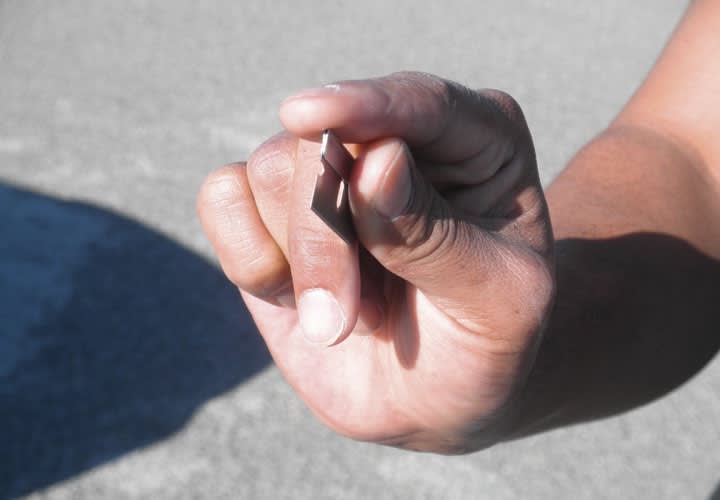There are other signs you can look for, too. With small blades without a handle, the suspect will usually hold the blade between the thumb and index finger using a standard grip. If the suspect wants a greater element of surprise, she may grip the blade with a scalpel grip, which is very difficult to detect and easy to use. It can be used to hide small and large blades. With this in mind, it is generally a good idea to have the suspect spread his fingers apart before you get close to him.
Deal with the Blade
If you are aware or lucky enough to realize a blade is in play, you have to react quickly. It takes the average officer two to three seconds to draw a firearm and fire. How many times do you think a skilled blade fighter could cut you in that time? I personally don't want to find out.
Your greatest chance for success is to draw your firearm and deal with the blade simultaneously. If you draw your firearm without dealing with the blade, the assailant will most likely have time to cut you more than once. You don't want that to happen. Getting cut is damaging not just physically but psychologically. No one likes to see their own blood spilled. Another aspect of injury during a knife attack is shock. Symptoms include confusion, low blood pressure, dizziness, rapid breathing, unconsciousness, and in extreme cases, death.[PAGEBREAK]
Another reason not to depend on your firearm in this situation? Getting your gun out is not enough to stop someone with a knife; you also have to get accurate shots off. Then you have to hope those shots will actually stop the assault. In 2006, the FBI produced the research summary "Violent Encounters: A Study of Felonious Assaults on Our Nation's Law Enforcement Officers." According to the report, officers only had a 40 percent hit rate when shooting at a suspect in deadly force encounters. Again, don't just draw your firearm; deal with the blade.











